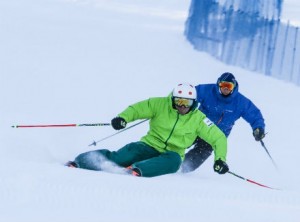Interview with Christian Keller, by Doug Sanders
Originally Published Dec 18, 2012:
Christian Keller walks out into the crisp breezy chill of the Snowy Mountains every morning with his eyes twinkling and ears curled back to make room for his glimmering smile. His 30 year old pink florescent Solomon boots clank on the metal grate as he walks over the bridge and turns to me. His thick Swiss accent he says “Douglas. I think there is knee deep powder today!” He pauses, tilts his head into schoolboy wink and continues, “You just need to kneel down!” His timing is still perfect even at 77 years.
Keller has a weather worn face with a freakishly young grin placed on top of it. He conducts himself with ageless grace, small, fit and neat. His movements are no longer fast and reflexive; as I am sure they once were, but smart and deliberate. His demeanor is quiet and gentle among his colleagues, and warm and often flirtatious with his clients. I only have seen him in his European team uniform or his Perisher blue instructors’ suit. His hat rests on top of his head above the ears to give him a little extra room to fit his over sized grin.
I wonder if he owns jeans. I don’t imagine he has a need for shorts or flip flops. You see; Keller has done over 50 years of teaching, back to back. To put that into perspective, he’s been teaching skiing in different hemispheres continuously since Eisnenhower was president. I am not sure this is the picture most of us have when we think about the ‘endless winter’. But Christian Keller’s quest has made him an icon and an inspiration for generations of ski instructors.
Keller was born in 1935 in Southern Switzerland near the Italian border. The border was his family’s life. His father was a customs agent and it was war in Europe in those days. His family moved every three years. “We were like Gypsies,” Keller jokes. His father taught him to ski as many families would have then. Keller took to skiing for fun and for sport. Then, just as now, he skied for love not competition. “I was very slow,” Christian joked about his ski racing. He skied with boyhood friends, “In those days we could ski rather than gymnastics for school sports. So I would ski, unless the weather was bad out.”
At the end of his youth, his family moved back to southern Switzerland near the Italian border. This is where he would end school and start his magical career. “That was our playground. Sometimes we skied one hour to school. We would walk up the hill, then down the other side to the school.” His skis were made of wood with a leather strap. There were two metal pins in the front to hold his boot on top of the ski. “We used the same leather boots for walking and for skiing. Then, we used the old telemark turn for steering”.
Keller left school and became a tradesman in the sheet metal and welding industry for four years. Back then one was required to have a job or a trade before you could become an instructor so you would be able to earn a living.
Keller started teaching skiing in 1958 and did his first back to back winter in Smiggin Holes in 1966 just two years after it opened. Then “Smiggins” as it’s known, only had 10 instructors. The Perisher valley itself was made of several small individual resorts, Smiggins, Perisher, Blue Cow and Guthega.
Keller remembered his first trip across the world to teach down under in 1966. “I flew through Delhi, then Bangkok, then Hong Kong, then over to Sydney.” “We drove in through Canberra and then on to Cooma. Then I drove through the Old Jindabyne when the dam was being built.” That town is now long sunk under a lake with same name. “We drove up the road toward Smiggins and there was still all the vegetation, the bushes, and the trees, but no snow! I thought gosh, what am I heading for! Then just as we turned the corner into Smiggins, there was snow on the hill. But it was just barely enough to turn a ski!” Smiggins is the lowest of all the now combined Perisher ski resorts. These days it is struggles to keep coverage there throughout the Australian season. “It snowed quite a lot more then,” Keller remembers.
In the following years Keller settled into the ‘back to back’ life style. He weathered the worst conditions imaginable. Winds blew off the south pacific bringing shards of ice that eventually piled into snowfall. He would then trudge back to winter again in the European Alps, where glaciers and small isolated towns locked yet another season under his belt. He eventually settled in working in St. Moritz in the northern hemisphere. I asked exactly when he started there, “Now that is getting personal” he joked while wagging a knotty finger at me. No matter which hemisphere he is in, the attitude is the same, a warm smile each day for anyone that walks up to greet him.
His career down south meandered. After four years in Smiggins he moved over to Perisher, about two kilometers up the road and 100 meters in elevation. This resort offered more terrain. Keller remembers a day in late September racing down the off the Olympic T-bar. The Olympic j bar is powered by a small diesel engine strokes so slowly you can tap your foot to each up and down of the cylinders. Black smoke pours out into crisp air and a dogleg left up the ridge frightens the average skier. It was here where he raced down the face at more than 30 degrees. “It was well groomed and prepared for such and endeavor. I went straight down at 180 kilometers an hour, then crashed very hard at the bottom near the Sun Valley T bar. I crashed so hard I broke my skis in half. Then my friend offered me to use his skis to go again. So I did! 140 kilometers and hour then straight down.” He did not break the borrowed skis.
There was comradery between the different ski schools and many of the pioneers that started teaching at adjacent resorts are now among Keller’s best friends and his coworkers now at the combined Perisher resort. Keller remembers years in which there was so much snow he could jump over the chairlift towers on Mt Perisher some 30 feet in the air. “They would use bulldozers to create T-bar tracks, then at night the wind would blow all the snow back in.” Other years Keller recalled terrible drought. “At Smiggins we only had a ribbon of snow. A client would go down and turn right, then down again. If they missed the turn to left, they were in the mud!” He laughed. “I remember teaching the sous chef at the Smiggin Hotel one year. She was very tall and it was very warm. She didn’t stop and went right over the creek and then slowly rolled back. She landed in the water up to her chest. I ran over to help, and she said no….it’s cool in here!”
After 12 years in Perisher, a new ski resort emerged in the area, Blue Cow. Keller moved over to this resort that lay off the back of Perisher and offered longer runs and better beginner terrain. The problem was it had no roads to it. So a tunnel was dug in from the valley far below near Jindabyne all the way up through Perisher valley, then into the “terminal” at Blue Cow. “At first they couldn’t complete the tunnel from Perisher to Blue Cow for trains. They ran diesel busses up the tunnel that year. In the morning it was okay, but by afternoon the smoke was terrible! If a bus broke down, they would use a bulldozer to pull it along the tunnel. It was a terrible smoke.”
“After 16 years the wind blew me back to Perisher” Keller says with another glint of his boyish grin. Winds at Blue Cow are often over 100k’s and all lifts (including carpets) go on wind hold.
Keller seems stitched into the fabric of Australian skiing. He would go on to teach generations of skiers. He tells stories of parents dropping children into his lesson saying “Listen to Christian. He taught me how to ski!” Later, that child, all grown up, would repeat the same advice to their child decades later. He still sees people he taught to ski two or more generations ago and they always remember to say “hi.” “That is very rewarding,” he says full dimples showing.
“Now I even teach beside people I taught to ski over 30 years ago! That is really fun.” When asked what he most enjoys about instructing. “There are always challenges to overcome.” His eyes widen now. “If I get beginner that has its challenges. If I get a person that can ski, that too has challenges. I love the freedom, and being outside in the air.”
Now Christian has logged in over a hundred seasons of full time skiing between Perisher and St. Moritz. At an average of 240 days or so a year that puts him over 24,000 days of full time teaching! That is a phenomenal number by any standard, and he shows no sign of slowing down, although he does admit to a little jet lag here and there. When I asked Keller how long he thought he could keep up the perpetual winter he looked at me wryly. “I think I have a few more years to go still. When I can’t keep up anymore I may have to become fulltime playboy instead of just a part time one!”
Written by Doug Sanders
Christian Keller (pictured above)



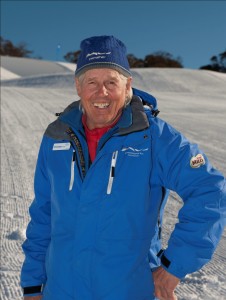
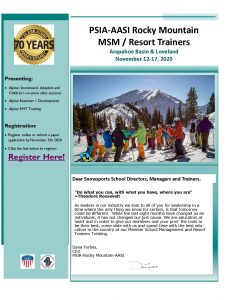
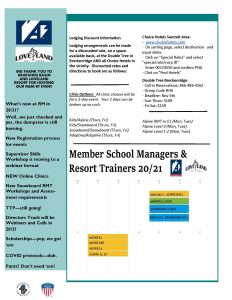
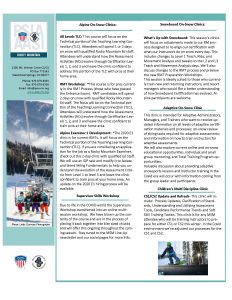

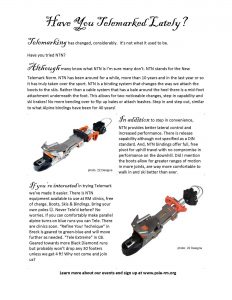
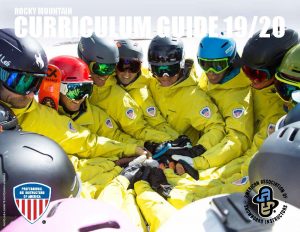

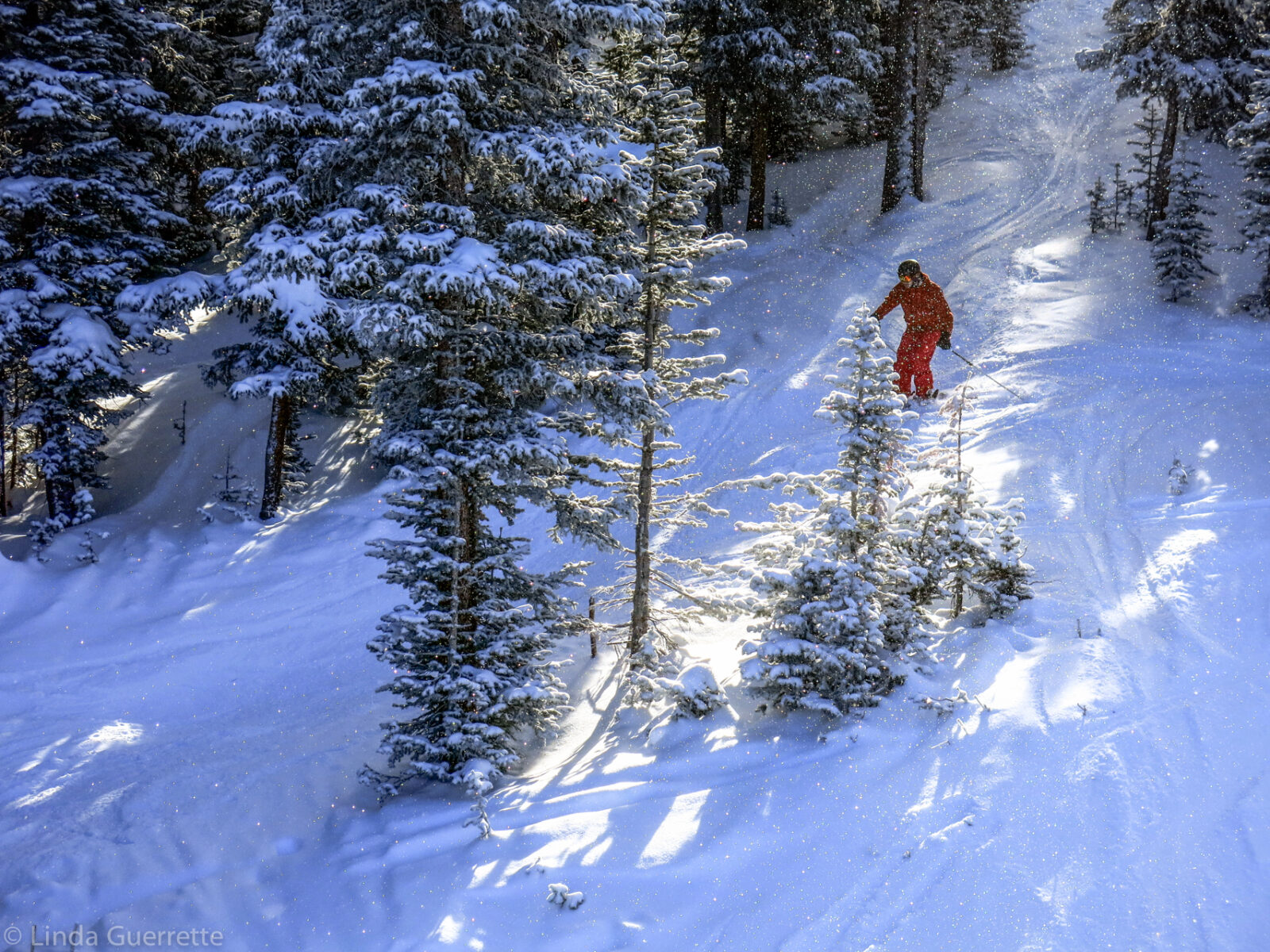
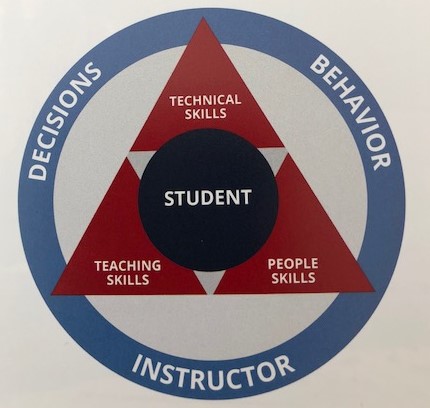
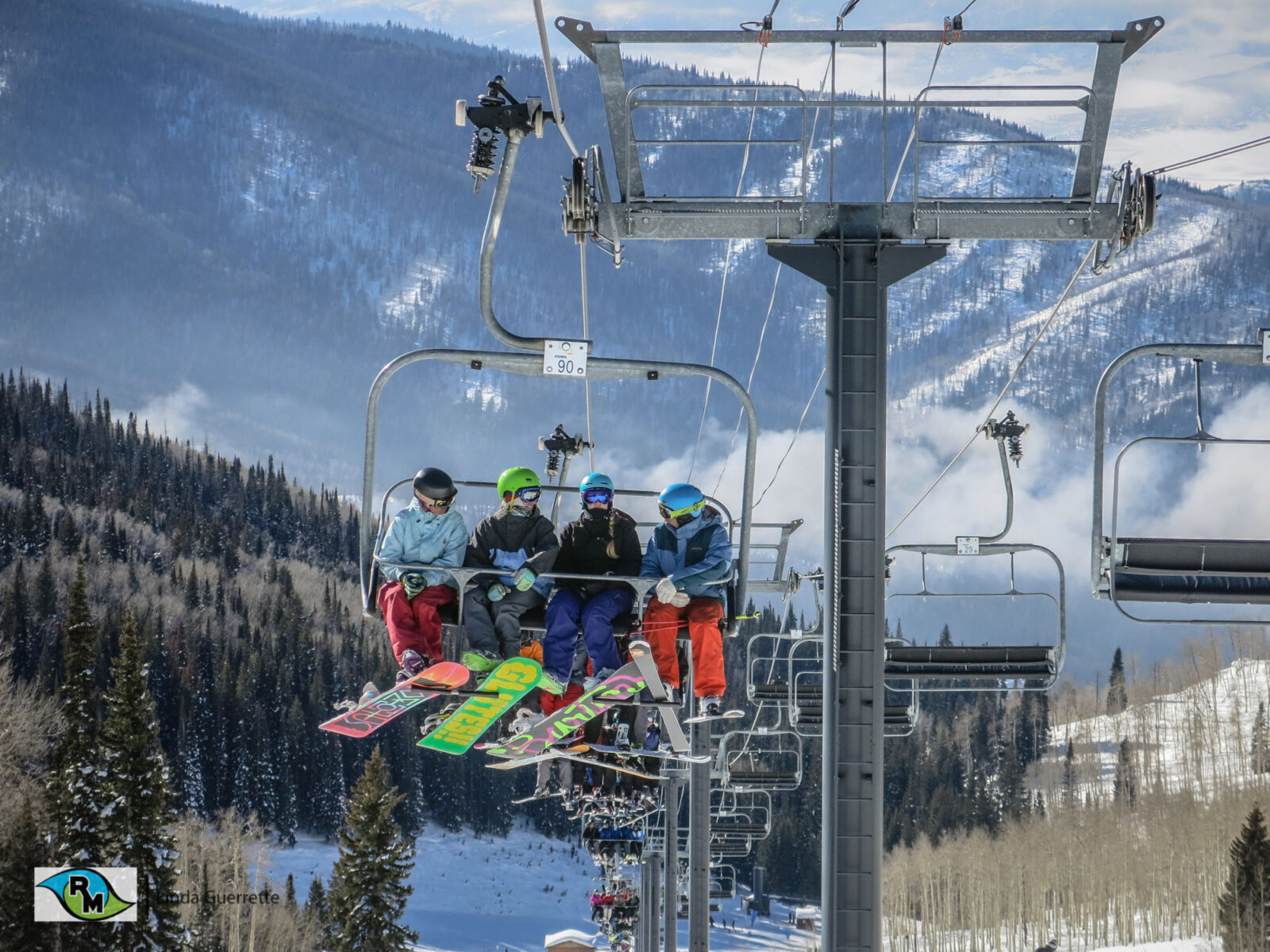
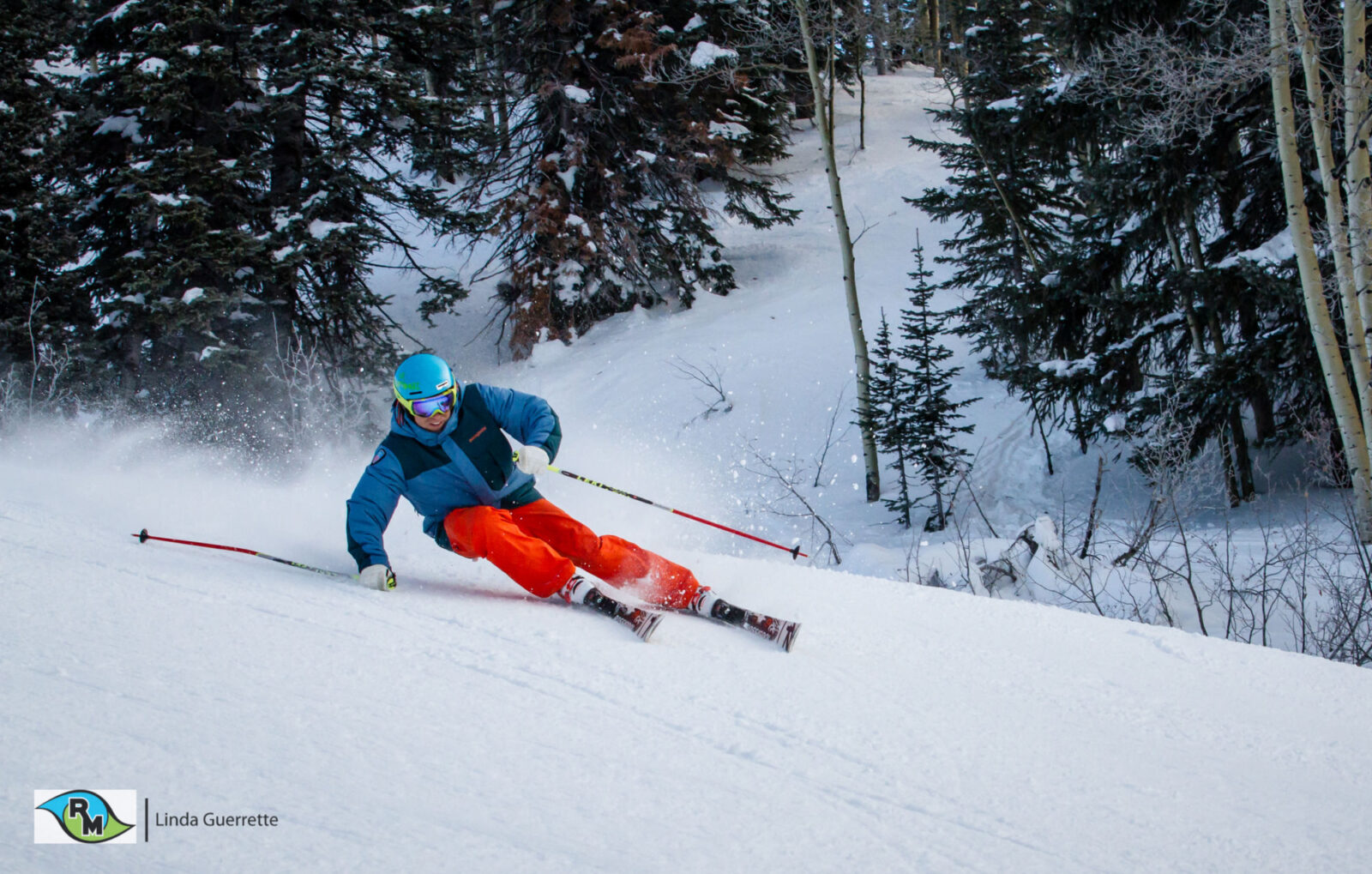
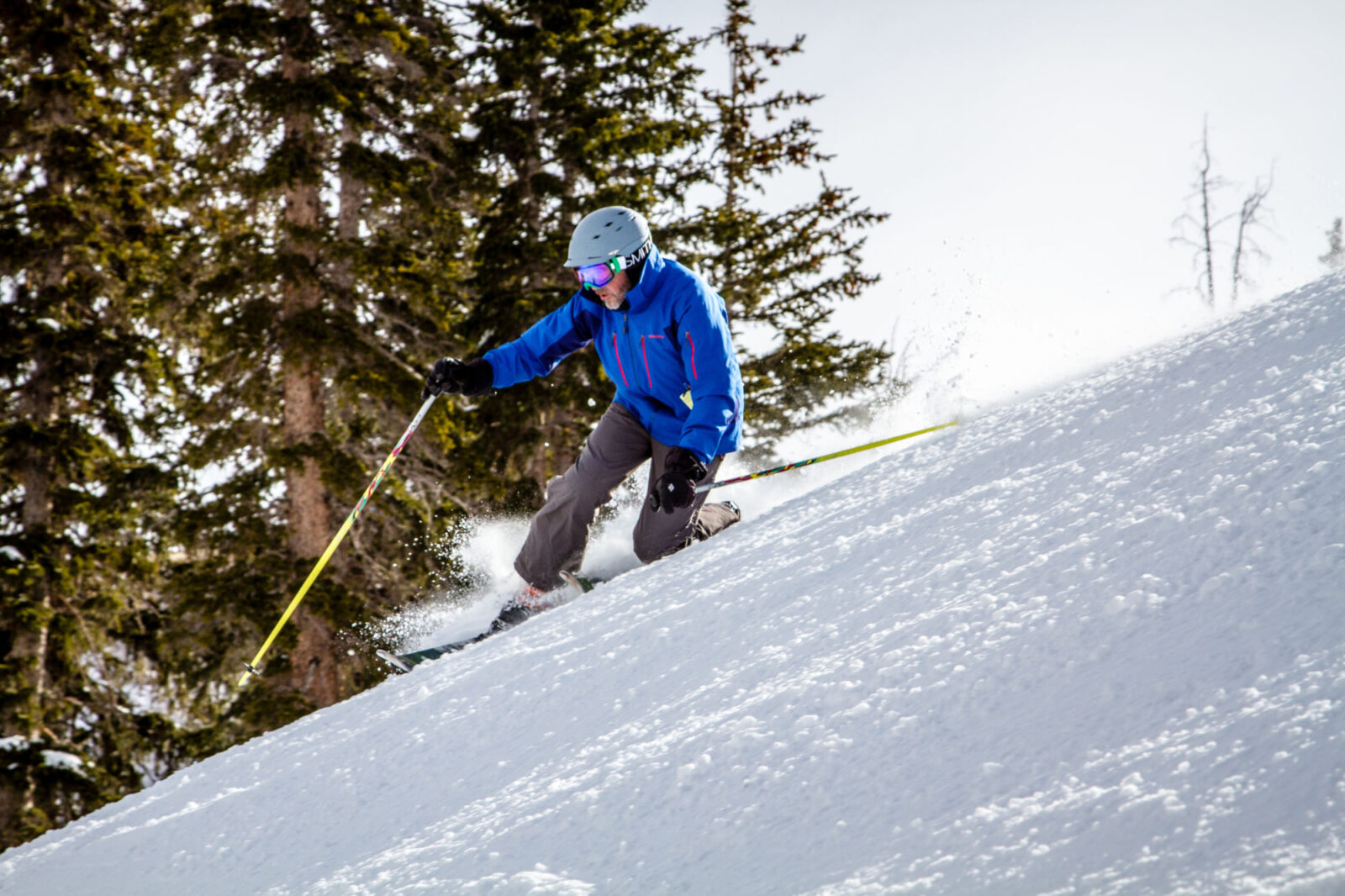
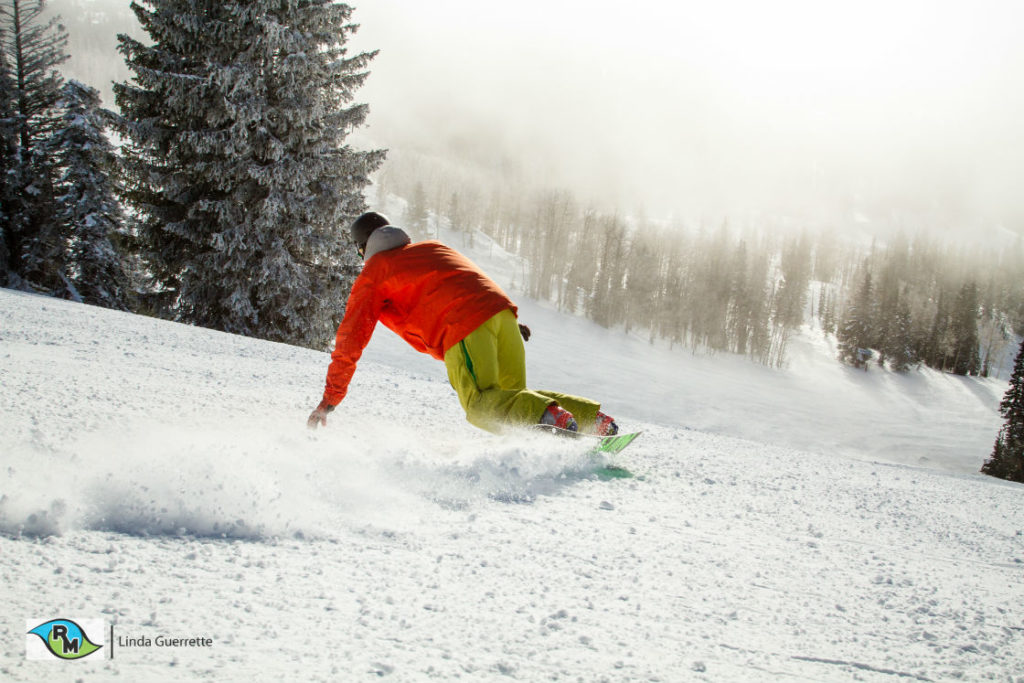
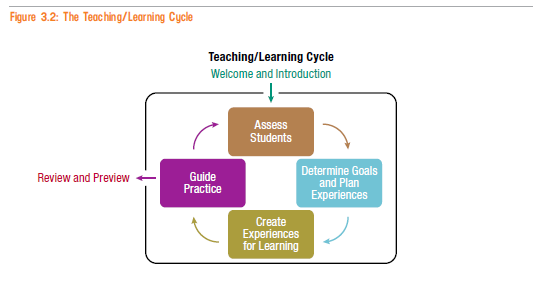
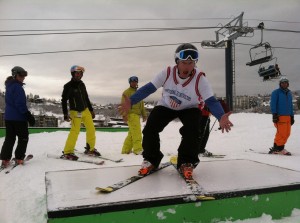
 The better you understand the why and how of skiing, the better a skier and ski educator you can be. The purpose of this pair of courses is to help deepen that understanding. Some of the topics that will be covered are:
The better you understand the why and how of skiing, the better a skier and ski educator you can be. The purpose of this pair of courses is to help deepen that understanding. Some of the topics that will be covered are:
